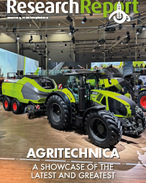This article is 2 years old. Images might not display.
The biggest challenges were from input costs and extreme weather events.
GPA says whilst some analysts forecast the Australian crop size at a substantial 71 million tonnes, valued at about $28 billion, Australian grain producers also planted the most expensive crop on record.
GPA's 2023 survey asked growers to provide feedback on the performance of last year's cropping program and identify their policy and advocacy priorities for the year ahead, to help resolve key issues and mitigate risks.
High grain prices helped alleviate cost of production pressures but input costs - especially record high fertiliser prices - were identified as having key impacts on farm profitability and sustainability.
More than 80 per cent of respondents said last year's cropping production costs were ‘significantly higher' compared with previous years, while about 15 per cent said these costs were ‘moderately higher'.
Fifty per cent said fertiliser costs had the most significant impact on their cropping program and risk profile last year, while 20 per cent identified pesticides and 10 per cent said fuel.
Asked how last year's cropping yield compared with previous years, about 80 per cent of respondents answered with a score of eight or higher (with 10 being the best and zero the worst).
In rating the overall performance of last year's cropping program, on the same scale of zero to 10, the overall average score was 7.7. Asked how the profitability of last year's cropping program compared with previous years, 6.7 was the average rating score.
While 45 per cent of respondents identified inputs as the ‘biggest challenge' they faced with producing last year's crop, flooding and storms, grain marketing/pricing, agronomic pressures, transport and logistics (for example, road damage) and farm labour were also high on the list.
A range of solutions were proposed by the respondents, with calls for policy action on local fertiliser manufacturing, pricing transparency, and better supply chain efficiencies, the most popular ones.
GPA chair, Barry Large, said: "Whilst 2022/23 was clearly a fantastic year for the majority of growers, the survey is a reminder of the serious impact that production costs have on growers' business viability. And the need to address other challenges such as supply chain and biosecurity protections, to ensure growers remain profitable and sustainable and the communities and economies we support."























